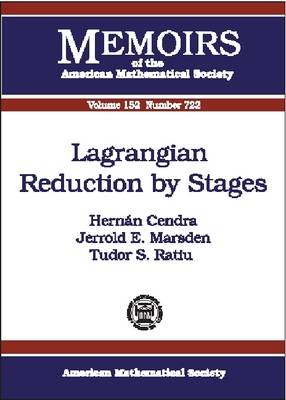Memoirs of the American Mathematical Society
1 total work
Lagrangian Reduction by Stages
by Hernan Cendra, Jerrold E. Marsden, and Tudor Ratiu
Published 1 January 2001
This booklet studies the geometry of the reduction of Lagrangian systems with symmetry in a way that allows the reduction process to be repeated; that is, it develops a context for Lagrangian reduction by stages. The Lagrangian reduction procedure focuses on the geometry of variational structures and how to reduce them to quotient spaces under group actions. This philosophy is well known for the classical cases, such as Routh reduction for systems with cyclic variables (where the symmetry group is Abelian) and Euler-Poincare reduction (for the case in which the configuration space is a Lie group) as well as Euler-Poincare reduction for semidirect products. The context established for this theory is a Lagrangian analogue of the bundle picture on the Hamiltonian side.In this picture, we develop a category that includes, as a special case, the realization of the quotient of a tangent bundle as the Whitney sum of the tangent of the quotient bundle with the associated adjoint bundle. The elements of this new category, called the Lagrange-Poincare category, have enough geometric structure so that the category is stable under the procedure of Lagrangian reduction. Thus, reduction may be repeated, giving the desired context for reduction by stages. Our category may be viewed as a Lagrangian analog of the category of Poisson manifolds in Hamiltonian theory. We also give an intrinsic and geometric way of writing the reduced equations, called the Lagrange-Poincare equations, using covariant derivatives and connections.In addition, the context includes the interpretation of cocycles as curvatures of connections and is general enough to encompass interesting situations involving both semidirect products and central extensions. Examples are given to illustrate the general theory. In classical Routh reduction one usually sets the conserved quantities conjugate to the cyclic variables equal to a constant. In our development, we do not require the imposition of this constraint. For the general theory along these lines, we refer to the complementary work of [2000], which studies the Lagrange-Routh equations.
